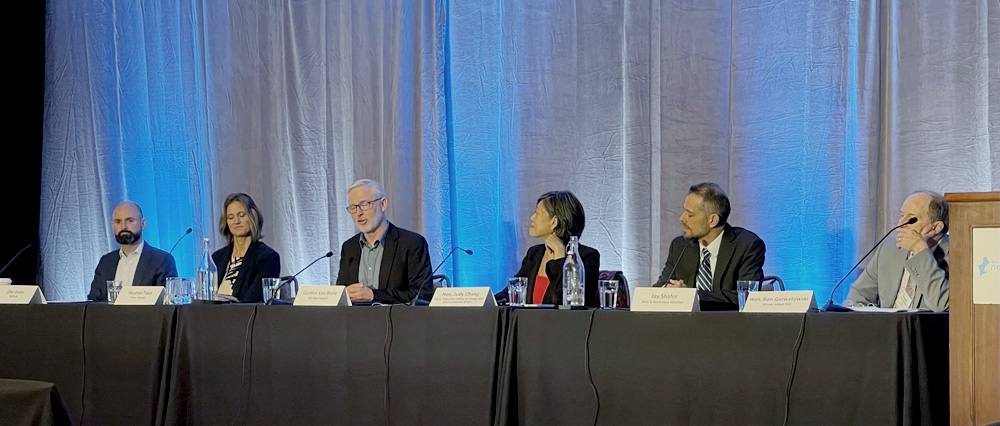The U.S. on Tuesday joined the U.K. and 40 other countries at the United Nations Climate Change Conference (COP26) to launch the Glasgow Breakthrough Agenda to advance clean technologies.
“Setting ambitious targets is only half of the equation” to limit global warming, President Joe Biden said during the launch event. “We have to immediately scale up clean technologies that are already commercially available … and it must also be a decisive decade for innovation.”
The U.S. is working to quadruple funding for clean energy research and development over the next four years, and it will “lead a year of action in 2022 to advance clean technologies globally,” he said.
Under the international plan spearheaded by U.K. Prime Minister Boris Johnson, participating countries will focus on breakthroughs in five sectors that cover half of all global greenhouse emissions. Those sectors are power, road transport, steel, hydrogen and agriculture.
As part of the plan, the U.S. will work with the World Economic Forum to accelerate clean companies and products for the First Movers Coalition.
Members of the coalition will buy low-carbon products by 2030 to help develop green supply chains and meet the climate goals, with initial commitments targeting shipping, aviation, steel and trucking.
“We’re attacking the challenge from both ends,” Biden said. “We’re sending the demand signal loud and clear and investing in research and development to expand supply.”
The coalition will start with a group of the world’s largest companies, including Apple and Volvo Group, and it will announce the full list during a launch event in Glasgow on Thursday.
“These companies will be critical partners in pushing for commercially viable alternatives to decarbonize the industrial sectors,” Biden said.
Together with the United Arab Emirates, Biden also announced the official launch of the Agriculture Innovation Mission for Climate (AIM for Climate).
First introduced at Biden’s virtual Leaders Summit on Climate in April, AIM for Climate will enable public-private and cross-sector partnerships in the global agriculture community through 2025. The initiative includes 31 additional countries and 48 non-government partners, according to the U.S. Department of Agriculture.
“We’re going to launch a $4 billion initial investment globally,” Biden said. “The U.S. is planning to mobilize $1 billion of that $4 billion over the next five years.”
Catalyst
European Commission President Ursula von der Leyen endorsed the Breakthrough Agenda during the launch event.
“I am especially glad that on this COP26, finally, we prioritize the importance of innovation, because it’s only through innovation that we’re going to get to our goal of net zero,” she said.
As an example of “concrete action on the ground” in support of the initiative, von der Leyen announced the official launch of the EU Catalyst Partnership with the European Investment Bank and Bill Gates’ catalyst program at Breakthrough Energy.
The partnership, which von der Leyen said is worth 1 billion euros over five years, will finance industry innovation.
“We will scale up critical green technologies and create markets for them,” she said during a press conference Tuesday on the partnership.
The commission committed to the partnership with Breakthrough Energy in June and has worked with the company to have the initiative “up and running for COP26,” she said.
Europe was an obvious choice in Breakthrough Energy’s search for partners committed to “transformative action,” Gates said during the press conference.
Breakthrough Energy is a network of investment vehicles, philanthropic initiatives and policy programs designed to accelerate the clean transition. The company’s catalyst program works to “move the most promising climate technologies from proof of concept to scale as fast as possible,” Gates said.
In September, seven companies agreed to be the first anchor partners for the catalyst program. Those companies are American Airlines, ArcelorMittal, Bank of America, The BlackRock Foundation, Boston Consulting Group, General Motors and Microsoft.
